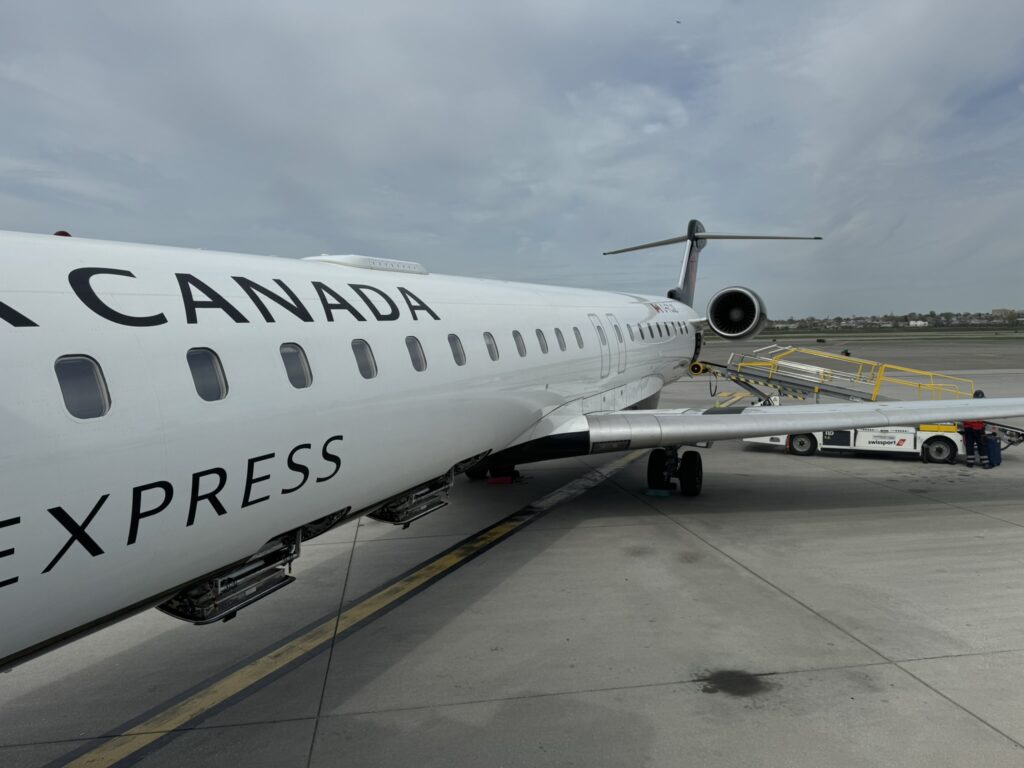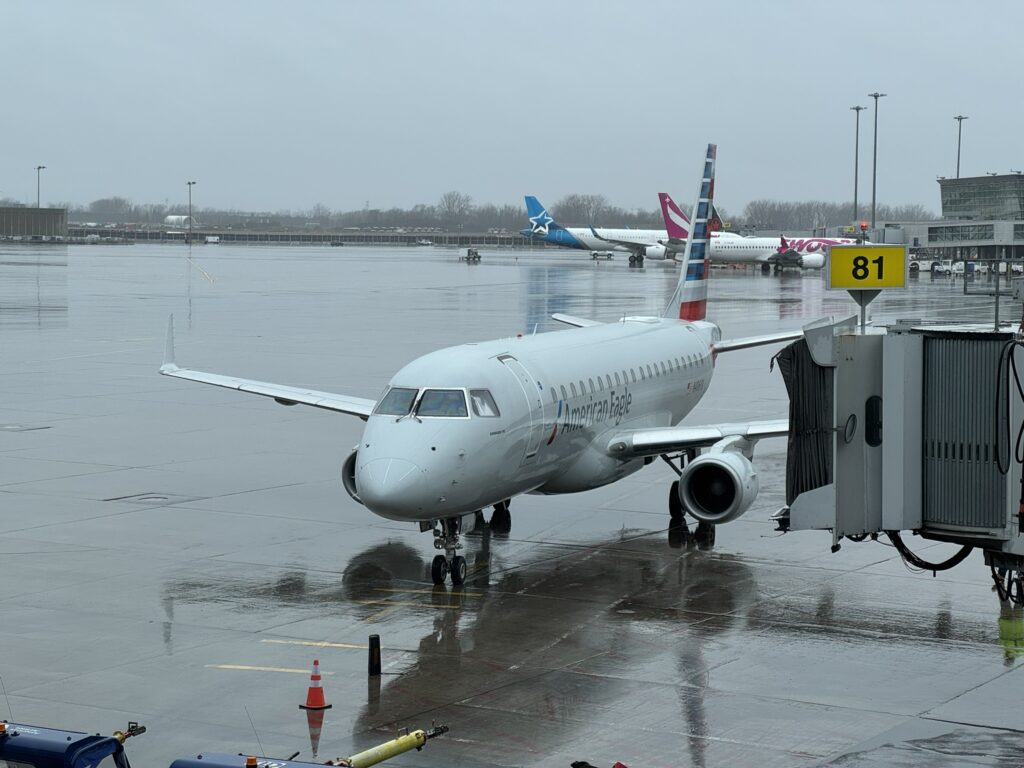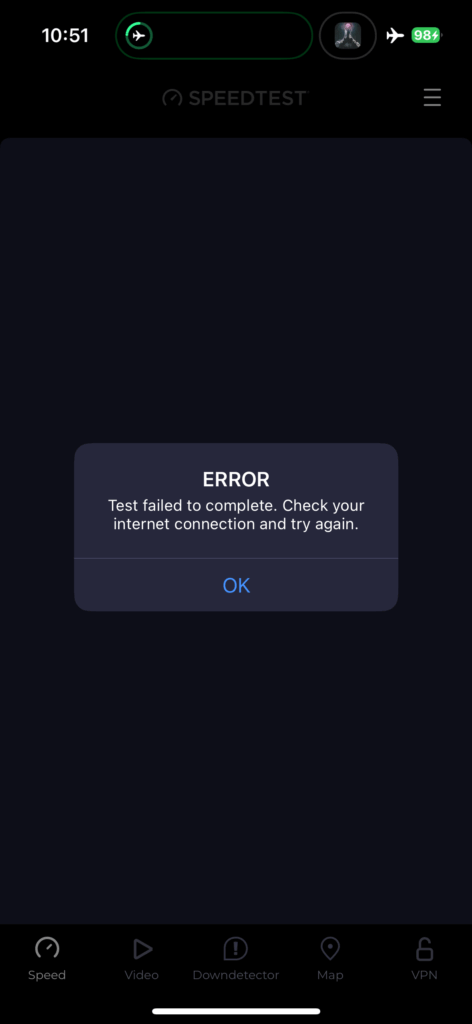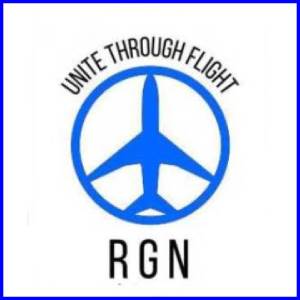 With Intelsat’s legacy air-to-ground network shutdown looming, airlines are making haste in deploying replacement inflight connectivity systems. The bulk of commercial aircraft still relying on the ground-based tower network are regional jets, but even those are finally starting to see upgrades. On a recent roundtrip between New York and Montreal I was afforded the opportunity to try Intelsat’s multi-orbit electronically steerable antenna (ESA) solution on both Air Canada and American Airlines.
With Intelsat’s legacy air-to-ground network shutdown looming, airlines are making haste in deploying replacement inflight connectivity systems. The bulk of commercial aircraft still relying on the ground-based tower network are regional jets, but even those are finally starting to see upgrades. On a recent roundtrip between New York and Montreal I was afforded the opportunity to try Intelsat’s multi-orbit electronically steerable antenna (ESA) solution on both Air Canada and American Airlines.
First up was an Air Canada Express CRJ900. Air Canada has finally made some progress on installs, though the system has not yet been fitted to the carrier’s more numerous Embraer E175 twinjets.
Although Air Canada now offers onboard Internet at no additional charge for Aeroplan members, I had to pay $8 CAD/$5.78 USD as the system would not accept my name and seat number. This might be because my reservation had a United MileagePlus number associated with it, and the airline no longer accepts partner accounts, or the system lost track of my many flight and seat changes on the day of travel.
A backup option to simply log in to my Aeroplan account was not present or just not obvious enough.
With payment processed, Intelsat’s multi-orbit IFC immediately impressed. The ESA-based solution operates via Eutelsat OneWeb’s Ku-band Low Earth Orbit (LEO) satellite constellation and Intelsat’s geostationary (GEO) satellite network.
Given the snappiness of the connection it seemed likely it was operating via LEO satellites from New York to Montreal. This was your author’s first time using a LEO-powered connection on a commercial flight, and I found it notable that a few hundred milliseconds of latency had been shaved off.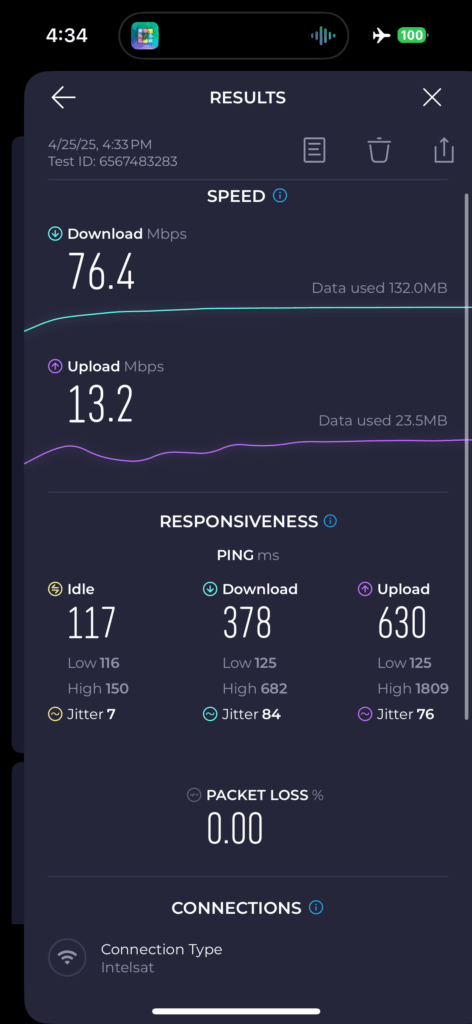 I threw everything I had at the system and I consistently saw download speeds of about 75 Mbps and uploads of up to 13.3 Mbps. Latency ranged from 117 ms to 166 ms for the majority of the flight, but spiked to just a tad over 200 ms once closer to Montreal.
I threw everything I had at the system and I consistently saw download speeds of about 75 Mbps and uploads of up to 13.3 Mbps. Latency ranged from 117 ms to 166 ms for the majority of the flight, but spiked to just a tad over 200 ms once closer to Montreal.
 While I’ve seen speeds in this range for many years from the likes of Viasat, latency being six times lower than GEO satellites made for a much better overall experience.
While I’ve seen speeds in this range for many years from the likes of Viasat, latency being six times lower than GEO satellites made for a much better overall experience.
Air Canada doesn’t seem to impose much in the way of traffic shaping or restrictions, as the connection was virtually indistinguishable from terrestrial connections and certainly better than many airport Wi-Fi networks.
Scrubbing through 4K HDR YouTube videos, uploading video to Bluesky, and even remote controlling a home security camera posed no issue at all.
A Facetime video call — I didn’t talk as not to disturb other passengers, but wanted to observe live video compression — worked just as well as it would on the ground. This was inflight connectivity as it has been promised for so very long.
Intelsat’s ESA Wi-Fi system did everything I asked of it with no appreciable delay or latency. Scrubbing through 4K HDR YouTube videos, controlling a live camera, speed tests, and even uploading this video of, uh, me doing all of that. #PaxEx
— Jason Rabinowitz (@airlineflyer.net) 2025-04-25T20:45:36.484Z
My return flight on American Airlines, operated with a Republic Airways Embraer E175, resulted in a different experience. American appeared to have some pretty heavy handed traffic shaping in place on the Montreal-New York flight.
The Intelsat multi-orbit IFC system also took a few minutes to connect, initially claiming Wi-Fi was “unavailable due to technical issues”. This cleared up as we taxied out to the runway, but it was not something I observed on Air Canada.
Latency hovered around 700 ms, making the entire web experience far more sluggish than on Air Canada. At this juncture, I wondered if the connection was relying solely on GEO satellites.
Download speeds were also erratic, ranging from high single digits to a maximum of just under 25 Mbps. Oddly, the Speedtest.net app wouldn’t even facilitate a test, while Netflix’s fast.com test ranged from sub-megabit to 2.5 Mbps.
I was able to control my home camera but faced an annoying delay when commanding any motion.
Despite these lower speed test results and higher ping times, streaming video from YouTube and Netflix was a mostly positive experience.
YouTube had no issues in streaming 4K video and even reported speeds of about 30 Mbps. A Facetime video call also yielded acceptable results, with the recipient observing only an occasional blurry video on the receiving end.
While American has announced it will transition to offering complimentary connectivity for AAdvantage loyalty members in 2026, it charged $12 US for a session on this less-than-an-hour flight with no option for free messaging.
Now that bits and bytes don’t need to be rationed on a capacity-choked terrestrial network I simply don’t understand American’s desire to charge such exorbitant rates.
While I’m not sure why Air Canada’s IFC seemingly utilized the LEO network and American seemingly utilized the GEO network, it showcased Intelsat’s ability to offer a mostly consistent experience across both network types, which is no easy feat. As installs quickly progress, regional jets seem prone to quickly jump from worst to first for connectivity.
Related Articles:
- American Airlines reverses course on free Wi-Fi
- Spirit Wi-Fi impresses in nearly ever way, except price
- Intelsat linefit and SB wins see multi-orbit IFC come to E2, 787
- Discover Airlines pivots from GEO to LEO/GEO with Panasonic on A330s
- Intelsat ESA fitted to over 100 jets; LEO/GEO live on most
- American wows with blazing fast Wi-Fi on Intelsat 2Ku-fitted A319s
All images credited to the author, Jason Rabinowitz





